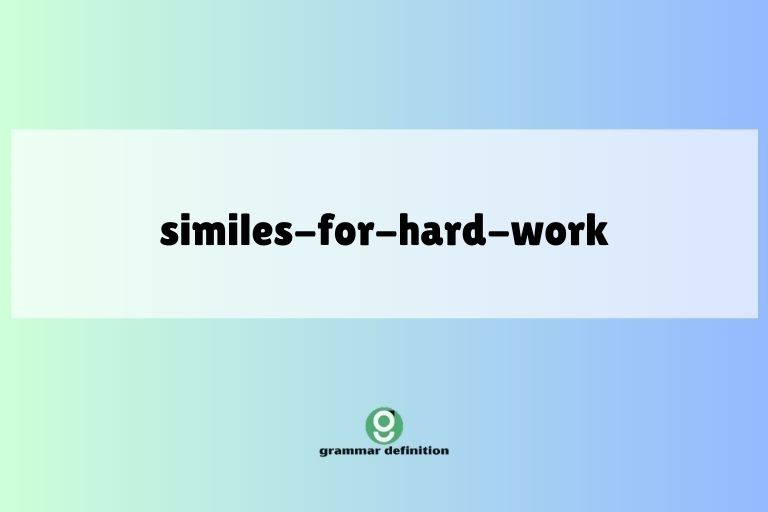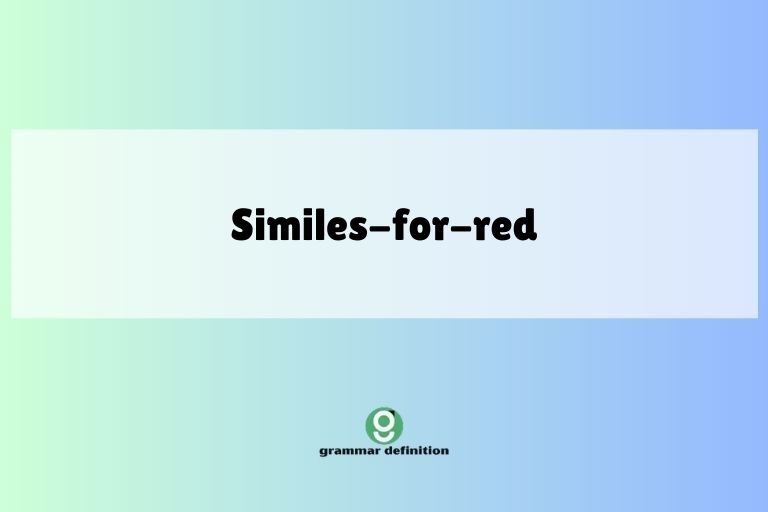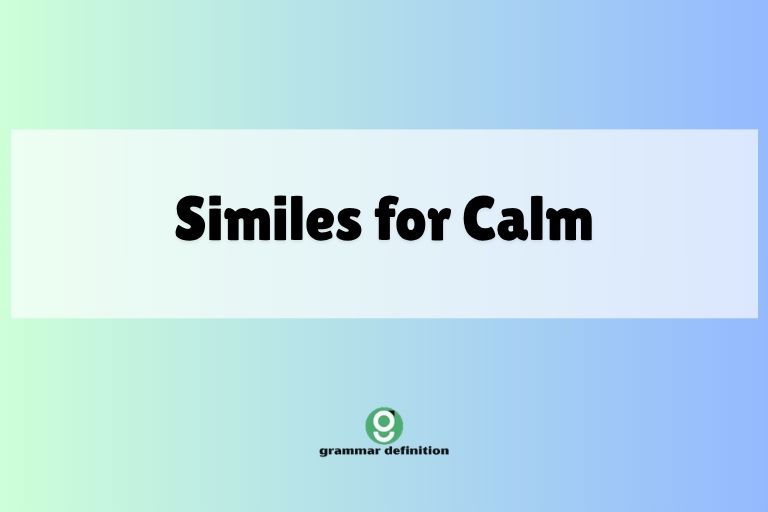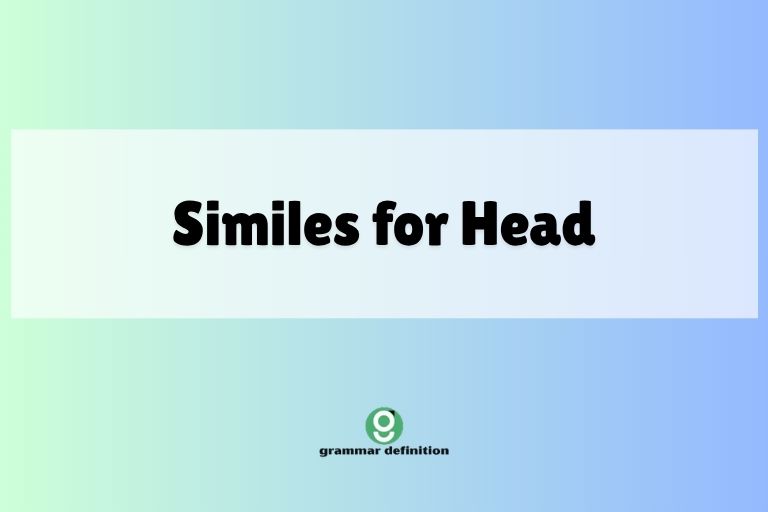Similes for Beauty: Enhancing Descriptions with Comparisons
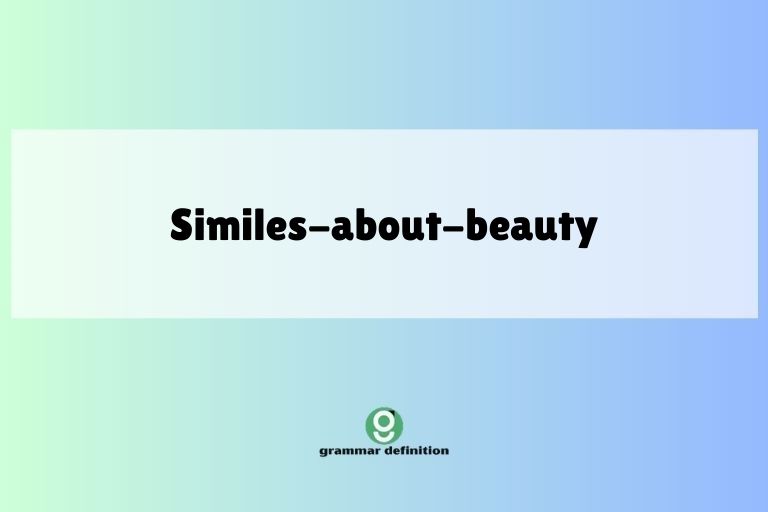
Similes are powerful tools in the English language, allowing us to vividly describe something by comparing it to something else. When it comes to beauty, similes can elevate our descriptions from the ordinary to the extraordinary.
This article explores the art of using similes to depict beauty, providing a comprehensive guide for learners of all levels. Understanding and mastering similes will not only enhance your writing and speaking skills but also deepen your appreciation for the nuances of the English language.
Whether you’re a student, a writer, or simply someone looking to improve your communication skills, this guide will equip you with the knowledge and practice you need to effectively use similes to describe beauty.
By the end of this article, you’ll be able to identify, create, and use similes with confidence, adding depth and color to your descriptions of beauty. This article is designed to be a comprehensive resource, covering everything from the basic definition of similes to advanced techniques for crafting unique and impactful comparisons.
Table of Contents
- Definition of Similes
- Structural Breakdown of Similes
- Types of Beauty and Corresponding Similes
- Examples of Similes for Beauty
- Usage Rules for Similes
- Common Mistakes with Similes
- Practice Exercises
- Advanced Topics: Metaphors vs. Similes
- Frequently Asked Questions
- Conclusion
Definition of Similes
A simile is a figure of speech that compares two unlike things using the words “like” or “as.” Its primary function is to create a vivid image or convey a particular quality by associating it with something familiar. Similes are essential for adding depth and color to descriptions, making them more engaging and memorable.
They differ from metaphors, which directly state that one thing *is* another, whereas similes suggest a resemblance or similarity. In essence, a simile says something *is like* something else, rather than *is* that thing.
Similes can be used in various contexts, from everyday conversation to formal writing. They are particularly effective in poetry, literature, and advertising, where the goal is to evoke emotions and create lasting impressions.
The effectiveness of a simile depends on the clarity and relevance of the comparison. A well-chosen simile can transform a mundane description into something extraordinary, allowing the reader or listener to see the subject in a new light.
Understanding the function and context of similes is crucial for using them effectively.
Structural Breakdown of Similes
The basic structure of a simile consists of three key elements: the subject being described, the connecting word (“like” or “as”), and the object of comparison. The subject is the thing whose beauty we are trying to convey.
The connecting word establishes the comparison. The object of comparison is something that possesses a quality that we want to associate with the subject.
The structure is straightforward but crucial for creating effective similes. Let’s break down each component further.
The formula for a simile is: Subject + Linking Word (like/as) + Object of Comparison. For example, in the simile “Her eyes were like sapphires,” “her eyes” is the subject, “like” is the linking word, and “sapphires” is the object of comparison. The strength of a simile lies in the relationship between the subject and the object of comparison. They should share a common quality that enhances the description. In the given example, the shared quality is the deep blue color and sparkle that makes the comparison effective. A poorly chosen object of comparison can result in a weak or confusing simile.
Variations in the structure are possible, but the core elements remain the same. For instance, the order can be slightly altered for emphasis, but the meaning should remain clear.
Understanding the structural components allows you to create your own similes with precision and creativity. By mastering this structure, you can craft similes that are both accurate and evocative, enhancing your descriptions of beauty and other subjects.
Types of Beauty and Corresponding Similes
Beauty is a multifaceted concept that can be categorized in various ways. Understanding these different types allows us to craft more specific and impactful similes.
Here, we will explore four main categories: physical appearance, natural beauty, inner beauty, and artistic beauty. Each category requires a different approach and a unique set of comparisons to effectively convey the desired image.
Physical Appearance
This category refers to the beauty of a person’s physical features, such as their face, hair, and body. Similes used to describe physical appearance often focus on qualities like smoothness, brightness, and symmetry.
Common comparisons include flowers, precious stones, and celestial bodies. For example, “Her skin was as smooth as silk” or “His eyes were like emeralds.” Similes in this category aim to create a visual image that is both appealing and memorable.
Natural Beauty
Natural beauty encompasses the beauty of the natural world, including landscapes, animals, and weather phenomena. Similes in this category often draw on the qualities of tranquility, grandeur, and vibrancy.
Examples include “The sunset was like a painting” or “The mountains stood as majestic as ancient kings.” These similes aim to evoke a sense of awe and wonder, capturing the essence of the natural world.
Inner Beauty
Inner beauty refers to the beauty of a person’s character, including their kindness, intelligence, and compassion. Similes used to describe inner beauty often focus on qualities like warmth, light, and strength.
Examples include “Her heart was as pure as gold” or “His spirit was like a beacon of hope.” These similes aim to convey the depth and richness of a person’s inner self, highlighting their positive qualities.
Artistic Beauty
Artistic beauty encompasses the beauty found in works of art, including paintings, sculptures, music, and literature. Similes in this category often draw on the qualities of harmony, balance, and expressiveness.
Examples include “The music was like a flowing river” or “The painting was as vibrant as a dream.” These similes aim to capture the emotional and aesthetic impact of the artwork, conveying its unique beauty.
Examples of Similes for Beauty
To illustrate the use of similes for describing beauty, we will explore specific examples categorized by the types of beauty discussed earlier. Each category will showcase a variety of similes, demonstrating how different comparisons can be used to convey different aspects of beauty.
These examples will serve as a guide and inspiration for creating your own similes.
Physical Appearance
These examples focus on similes used to describe the physical appearance of a person. They cover various features, such as skin, hair, eyes, and overall appearance.
Each simile aims to create a vivid image in the reader’s mind, highlighting the subject’s beauty.
| Simile | Explanation |
|---|---|
| Her skin was as smooth as silk. | Compares the texture of her skin to the smoothness of silk, emphasizing its softness. |
| His eyes were like emeralds. | Compares the color and brilliance of his eyes to the gemstone emerald, highlighting their striking appearance. |
| Her hair flowed like a golden waterfall. | Compares the movement and color of her hair to a waterfall, emphasizing its beauty and abundance. |
| She was as radiant as the morning sun. | Compares her overall appearance to the brightness and warmth of the morning sun, emphasizing her glowing beauty. |
| His smile was as bright as a summer day. | Compares the happiness and warmth of his smile to a bright summer day, emphasizing its positive impact. |
| Her lips were like rose petals. | Compares the color and softness of her lips to rose petals, emphasizing their delicate beauty. |
| His face was as chiseled as a statue. | Compares the sharp and defined features of his face to a statue, emphasizing its sculpted appearance. |
| Her voice was as sweet as honey. | Compares the pleasantness of her voice to the sweetness of honey, emphasizing its soothing quality. |
| He moved as gracefully as a dancer. | Compares his movements to the fluidity and elegance of a dancer, emphasizing his poise. |
| She stood as tall and proud as a queen. | Compares her posture and demeanor to that of a queen, emphasizing her confidence and regal presence. |
| His hands were as gentle as a feather. | Compares the softness of his touch to a feather, emphasizing his tenderness. |
| Her laughter was like music to his ears. | Compares the sound of her laughter to music, emphasizing its pleasant and uplifting quality. |
| His gaze was as intense as a hawk’s. | Compares the focus and intensity of his gaze to a hawk, emphasizing its piercing quality. |
| She blushed as red as a poppy. | Compares the color of her blush to a poppy, emphasizing its vibrant and noticeable appearance. |
| His eyes twinkled like stars. | Compares the sparkle in his eyes to stars, emphasizing their brightness and charm. |
| Her figure was as curvaceous as an hourglass. | Compares her body shape to an hourglass, emphasizing its classic and attractive form. |
| His beard was as thick as a forest. | Compares the density of his beard to a forest, emphasizing its fullness and ruggedness. |
| Her skin glowed like moonlight. | Compares the radiance of her skin to moonlight, emphasizing its ethereal and soft quality. |
| His presence was as commanding as a king’s. | Compares his presence to that of a king, emphasizing his authority and charisma. |
| She floated into the room like a dream. | Compares her entrance to a dream, emphasizing her ethereal and graceful presence. |
| He was as handsome as a Greek god. | Compares his attractiveness to that of a Greek god, emphasizing his classical beauty. |
| Her smile was as contagious as the flu. | Compares the spread of her smile to the flu, emphasizing its infectious and uplifting quality. |
| His hair was as black as night. | Compares the color of his hair to the darkness of night, emphasizing its deep and striking shade. |
| She was as delicate as a flower. | Compares her fragility and beauty to a flower, emphasizing her gentle nature. |
| His build was as strong as an oak tree. | Compares his physical strength and sturdiness to an oak tree, emphasizing his power. |
| Her eyes sparkled like diamonds. | Compares the brilliance of her eyes to diamonds, emphasizing their captivating shine. |
| His touch was as warm as sunshine. | Compares the warmth of his touch to sunshine, emphasizing its comforting and pleasant sensation. |
Natural Beauty
These examples showcase similes used to describe the beauty of nature. They cover various elements such as landscapes, weather, and natural phenomena.
The aim is to evoke a sense of wonder and appreciation for the natural world.
| Simile | Explanation |
|---|---|
| The sunset was like a painting. | Compares the colors and composition of the sunset to a painting, emphasizing its artistic beauty. |
| The mountains stood as majestic as ancient kings. | Compares the grandeur and imposing presence of the mountains to ancient kings, emphasizing their authority and timelessness. |
| The river flowed like liquid silver. | Compares the movement and appearance of the river to liquid silver, emphasizing its fluidity and shimmering quality. |
| The stars twinkled like diamonds in the sky. | Compares the brightness and sparkle of the stars to diamonds, emphasizing their brilliance and preciousness. |
| The forest was as silent as a tomb. | Compares the quietness of the forest to a tomb, emphasizing its stillness and serenity. |
| The ocean roared like a lion. | Compares the sound and power of the ocean to a lion, emphasizing its strength and ferocity. |
| The flowers bloomed as vibrant as rainbows. | Compares the colors and variety of the blooming flowers to rainbows, emphasizing their beauty and diversity. |
| The snow fell as softly as feathers. | Compares the gentle descent of the snow to feathers, emphasizing its lightness and delicate nature. |
| The moon shone as brightly as a spotlight. | Compares the intensity of the moonlight to a spotlight, emphasizing its illumination. |
| The desert stretched out like a sea of sand. | Compares the vastness and uniformity of the desert to a sea of sand, emphasizing its scale and desolation. |
| The waterfall cascaded like a curtain of water. | Compares the flow of the waterfall to a curtain, emphasizing its continuous and graceful descent. |
| The clouds drifted like ships in the sky. | Compares the movement of the clouds to ships, emphasizing their slow and majestic journey. |
| The lightning flashed like a strobe light. | Compares the sudden and intense burst of lightning to a strobe light, emphasizing its dramatic effect. |
| The breeze whispered like a secret. | Compares the gentle sound of the breeze to a whisper, emphasizing its subtlety and intimacy. |
| The leaves rustled like paper. | Compares the sound of the leaves moving in the wind to paper, emphasizing their crisp and delicate sound. |
| The lake was as still as glass. | Compares the calmness of the lake to glass, emphasizing its smoothness and reflectiveness. |
| The mountains were capped with snow like icing on a cake. | Compares the snow-covered mountain peaks to icing on a cake, emphasizing their sweet and picturesque appearance. |
| The sunrise was as golden as honey. | Compares the color of the sunrise to honey, emphasizing its warm and rich hue. |
| The valley was as green as an emerald. | Compares the lushness of the valley to an emerald, emphasizing its vibrant color and richness. |
| The waves crashed like thunder. | Compares the sound of the waves to thunder, emphasizing their power and force. |
| The forest floor was as soft as a carpet. | Compares the texture of the forest floor to a carpet, emphasizing its cushioning and comfort. |
| The sky was as blue as a sapphire. | Compares the color of the sky to a sapphire, emphasizing its deep and brilliant hue. |
| The fog rolled in like a ghost. | Compares the movement of the fog to a ghost, emphasizing its mysterious and ethereal presence. |
| The stars shone like a million eyes. | Compares the numerous stars to eyes, emphasizing their watchful and pervasive presence. |
| The garden was as fragrant as a perfume shop. | Compares the scent of the garden to a perfume shop, emphasizing its intense and varied aromas. |
| The meadow was as colorful as a quilt. | Compares the variety of colors in the meadow to a quilt, emphasizing its patchwork beauty. |
| The lake shimmered like a mirage. | Compares the shimmering appearance of the lake to a mirage, emphasizing its elusive and enchanting quality. |
Inner Beauty
These examples focus on similes used to describe a person’s inner beauty, including their character, personality, and virtues. They aim to convey the positive qualities that make a person beautiful on the inside.
| Simile | Explanation |
|---|---|
| Her heart was as pure as gold. | Compares the purity of her heart to gold, emphasizing its value and untainted nature. |
| His spirit was like a beacon of hope. | Compares his spirit to a beacon, emphasizing its guiding and uplifting quality. |
| Her kindness was as warm as sunshine. | Compares the warmth of her kindness to sunshine, emphasizing its comforting and pleasant effect. |
| His generosity flowed like a river. | Compares the abundance of his generosity to a flowing river, emphasizing its continuous and plentiful nature. |
| Her wisdom was as deep as the ocean. | Compares the depth of her wisdom to the ocean, emphasizing its vastness and profoundness. |
| His courage was as strong as a lion. | Compares the strength of his courage to a lion, emphasizing its bravery and resilience. |
| Her patience was as endless as time. | Compares the limitlessness of her patience to time, emphasizing its enduring quality. |
| His integrity was as solid as a rock. | Compares the steadfastness of his integrity to a rock, emphasizing its reliability and strength. |
| Her compassion was as boundless as the sky. | Compares the extent of her compassion to the sky, emphasizing its limitlessness and all-encompassing nature. |
| His loyalty was as true as steel. | Compares the steadfastness of his loyalty to steel, emphasizing its strength and reliability. |
| Her understanding was as clear as crystal. | Compares the clarity of her understanding to crystal, emphasizing its purity and transparency. |
| His forgiveness was as gentle as rain. | Compares the soothing quality of his forgiveness to rain, emphasizing its cleansing and restorative effect. |
| Her love was as fierce as a fire. | Compares the intensity of her love to a fire, emphasizing its passion and strength. |
| His optimism was as bright as the sun. | Compares the positivity of his optimism to the sun, emphasizing its uplifting and radiant quality. |
| Her humility was as quiet as a whisper. | Compares the subtlety of her humility to a whisper, emphasizing its unassuming and gentle nature. |
| His resilience was as tough as leather. | Compares the durability of his resilience to leather, emphasizing its ability to withstand hardship. |
| Her grace was as effortless as a bird’s flight. | Compares the ease of her grace to a bird’s flight, emphasizing its natural and fluid quality. |
| His wit was as sharp as a razor. | Compares the keenness of his wit to a razor, emphasizing its precision and intelligence. |
| Her charm was as captivating as a spell. | Compares the allure of her charm to a spell, emphasizing its enchanting and irresistible quality. |
| His wisdom was as old as the hills. | Compares the depth of his wisdom to the age of the hills, emphasizing its extensive and time-tested nature. |
| Her spirit was as free as a bird. | Compares the unbound nature of her spirit to a bird, emphasizing its independence and joy. |
| His heart was as big as the world. | Compares the capacity of his heart to the world, emphasizing its all-encompassing love and compassion. |
| Her smile was as comforting as a warm blanket. | Compares the comfort of her smile to a warm blanket, emphasizing its soothing and reassuring effect. |
| His soul was as bright as a star. | Compares the radiance of his soul to a star, emphasizing its purity and brilliance. |
| Her laughter was as infectious as a yawn. | Compares the spread of her laughter to a yawn, emphasizing its contagious and uplifting quality. |
Artistic Beauty
These examples offer similes for describing the beauty found in art, music, and literature. They focus on conveying the aesthetic and emotional impact of various artistic expressions.
| Simile | Explanation |
|---|---|
| The music was like a flowing river. | Compares the movement and fluidity of the music to a flowing river, emphasizing its smooth and continuous nature. |
| The painting was as vibrant as a dream. | Compares the colors and imagery of the painting to a dream, emphasizing its vividness and surreal quality. |
| The poem was as delicate as a butterfly’s wing. | Compares the sensitivity and fragility of the poem to a butterfly’s wing, emphasizing its gentle and ephemeral nature. |
| The sculpture was as lifelike as a real person. | Compares the realism of the sculpture to a real person, emphasizing its accuracy and detail. |
| The dance was like a story told without words. | Compares the expressiveness of the dance to a story, emphasizing its ability to convey emotions and narratives. |
| The film was as captivating as a good book. | Compares the engaging quality of the film to a good book, emphasizing its ability to hold the audience’s attention. |
| The play was as dramatic as a thunderstorm. | Compares the intensity and excitement of the play to a thunderstorm, emphasizing its powerful and emotional impact. |
| The song was as soothing as a lullaby. | Compares the calming effect of the song to a lullaby, emphasizing its gentle and comforting quality. |
| The artwork was as thought-provoking as a philosophical debate. | Compares the intellectual stimulation of the artwork to a philosophical debate, emphasizing its ability to challenge and inspire reflection. |
| The novel was as immersive as a vivid dream. | Compares the depth of engagement with the novel to a vivid dream, emphasizing its ability to transport the reader to another world. |
| The symphony was as grand as a royal procession. | Compares the scale and majesty of the symphony to a royal procession, emphasizing its impressive and dignified nature. |
| The photograph was as timeless as an old memory. | Compares the enduring quality of the photograph to an old memory, emphasizing its ability to capture and preserve moments. |
| The performance was as electrifying as a live concert. | Compares the energy and excitement of the performance to a live concert, emphasizing its dynamic and engaging nature. |
| The drawing was as precise as an architect’s blueprint. | Compares the accuracy and detail of the drawing to an architect’s blueprint, emphasizing its technical skill. |
| The design was as innovative as a science fiction invention. | Compares the originality of the design to a science fiction invention, emphasizing its forward-thinking and inventive nature. |
| The statue was as imposing as a historical monument. | Compares the impressiveness of the statue to a historical monument, emphasizing its grandeur and significance. |
| The exhibition was as diverse as a world fair. | Compares the variety of the exhibition to a world fair, emphasizing its range and scope. |
| The film score was as emotive as a heartrending farewell. | Compares the emotional impact of the film score to a heartrending farewell, emphasizing its ability to evoke deep feelings. |
| The play’s dialogue was as sharp as a comedian’s wit. | Compares the cleverness of the play’s dialogue to a comedian’s wit, emphasizing its humor and intelligence. |
| The book’s prose was as lyrical as a song. | Compares the beauty of the book’s writing to a song, emphasizing its musical and poetic qualities. |
Usage Rules for Similes
Using similes effectively requires adherence to certain rules. These rules ensure that the comparisons are clear, relevant, and impactful.
Understanding and following these guidelines will help you craft similes that enhance your descriptions and engage your audience.
1. Clarity: The comparison should be easy to understand. Avoid obscure or overly complex references that might confuse the reader. The object of comparison should be familiar to the audience. For example, “Her smile was as bright as the sun” is clearer than “Her smile was as bright as a distant quasar.”
2. Relevance: The object of comparison should share a relevant quality with the subject being described. The shared quality should be the basis of the comparison. For example, comparing the smoothness of skin to silk is relevant because both share the quality of smoothness. Avoid comparisons that lack a clear connection.
3. Originality: While common similes can be effective, strive for originality to make your writing more engaging. Overused similes can become clichés and lose their impact. Try to find fresh and unique comparisons that will surprise and delight your audience. For example, instead of “as red as a rose,” consider “as red as a freshly cut pomegranate.”
4. Context: The simile should fit the context of the writing or conversation. Consider the tone, audience, and purpose of your communication. A simile that is appropriate in one context might be inappropriate in another. For example, a formal essay might require more sophisticated similes than a casual conversation.
5. Balance: Avoid overusing similes. While they can enhance descriptions, too many similes can make your writing feel cluttered and artificial. Use them sparingly and strategically to maximize their impact. Aim for a balance between direct descriptions and figurative language.
Common Mistakes with Similes
Even experienced writers can make mistakes when using similes. Recognizing these common errors and understanding how to avoid them is crucial for effective communication.
Here, we will explore some frequent mistakes and provide examples of correct usage.
1. Using Clichés: Clichés are overused similes that have lost their impact. Examples include “as busy as a bee,” “as blind as a bat,” and “as quiet as a mouse.” While they are easy to use, they often fail to create a vivid image or engage the audience. Instead, opt for more original and creative comparisons.
2. Illogical Comparisons: A simile should compare two things that share a common quality. Illogical comparisons occur when there is no clear connection between the subject and the object of comparison. For example, “Her voice was like a brick wall” makes little sense because there is no shared quality between a voice and a brick wall.
3. Overly Complex Similes: While originality is important, avoid making your similes too complex or obscure. The comparison should be easy to understand. Overly complex similes can confuse the reader and detract from your message. For example, “His thoughts were like the Schrödinger equation applied to existential dread” might be too abstract for most audiences.
4. Misusing “Like” and “As”: “Like” and “as” are the connecting words in similes, but they should be used correctly. “Like” is typically used to compare nouns or pronouns, while “as” can be used in various ways, including comparing clauses. Incorrect usage can lead to grammatical errors and unclear comparisons. For example, “He runs like a cheetah” is correct, but “He runs as a cheetah” is incorrect.
5. Redundant Comparisons: Avoid stating the obvious in your similes. The comparison should add something new or interesting to the description. Redundant comparisons simply repeat what is already known. For example, “The water was as wet as water” is redundant because it states the obvious.
The table below illustrates some common mistakes and provides correct examples:
| Incorrect | Correct | Explanation |
|---|---|---|
| He was as busy as a bee. | He was as busy as a one-armed juggler. | Avoid clichés by using more original comparisons. |
| Her laugh was like a doorknob. | Her laugh was like a tinkling bell. | Ensure the comparison is logical and shares a relevant quality. |
| His explanation was like the complexities of quantum physics. | His explanation was like a tangled thread. | Keep the comparison clear and easy to understand. |
| She sings like a bird sings. | She sings like a nightingale. | Avoid redundancy by adding something new to the description. |
Practice Exercises
These exercises will help you practice identifying and creating similes for describing beauty. The exercises vary in difficulty, allowing you to gradually improve your skills.
Each exercise includes questions and answers to help you check your understanding.
Exercise 1: Identifying Similes
Identify the similes in the following sentences:
| Question | Answer |
|---|---|
| 1. Her eyes were like sparkling jewels. | like sparkling jewels |
| 2. The sunset was beautiful. | No simile present |
| 3. His heart was as cold as ice. | as cold as ice |
| 4. She is a talented artist. | No simile present |
| 5. The music flowed like a river. | like a river |
| 6. His words were as sharp as knives. | as sharp as knives |
| 7. The garden was colorful. | No simile present |
| 8. Her voice was like a melody. | like a melody |
| 9. He is a strong leader. | No simile present |
| 10. The snow fell as softly as feathers. | as softly as feathers |
Exercise 2: Completing Similes
Complete the following similes with appropriate comparisons:
| Question | Answer |
|---|---|
| 1. Her skin was as smooth as _____. | silk |
| 2. His eyes were like _____. | deep pools |
| 3. The mountains stood as majestic as _____. | ancient kings |
| 4. Her laughter was like _____. | music |
| 5. His spirit was as free as _____. | a bird |
| 6. The river flowed like _____. | liquid silver |
| 7. Her heart was as pure as _____. | gold |
| 8. The wind whispered like _____. | a secret |
| 9. The snow fell as softly as _____. | feathers |
| 10. His smile was as bright as _____. | the sun |
Exercise 3: Creating Similes
Create your own similes to describe the following:
| Question | Possible Answer |
|---|---|
| 1. Describe a beautiful flower. | The flower was as vibrant as a rainbow. |
| 2. Describe a person’s kind heart. | Her heart was as warm as sunshine. |
| 3. Describe a stunning sunset. | The sunset was like a fiery painting in the sky. |
| 4. Describe a talented musician. | His music was like a gentle breeze. |
| 5. Describe a peaceful forest. | The forest was as silent as a sleeping giant. |
| 6. Describe a person’s radiant smile. | Her smile was as contagious as laughter. |
| 7. Describe a majestic mountain. | The mountain stood as proud as a king on his throne. |
| 8. Describe a flowing river. | The river flowed like a ribbon of silver. |
| 9. Describe a person’s strong will. | Her will was as unbreakable as steel. |
| 10. Describe a beautiful painting. | The painting was as captivating as a dream. |
Advanced Topics: Metaphors vs. Similes
Similes and metaphors are both figures of speech that make comparisons, but they do so in different ways. Understanding the distinction between them is crucial for mastering figurative language.
While a simile states that one thing is *like* another, a metaphor implies that one thing *is* another. Let’s explore the nuances of each and how they are used.
Similes: Use “like” or “as” to make a direct comparison. They are explicit and straightforward, making the comparison clear and obvious. For example, “Her eyes were like sapphires” directly compares the color of her eyes to sapphires.
Metaphors: Imply a comparison without using “like” or “as.” They state that one thing *is* another, creating a more implicit and suggestive comparison. For example, “Her eyes were sapphires” implies that her eyes possess the qualities of sapphires without explicitly stating the comparison.
The key difference lies in the directness of the comparison. Similes are more tentative and suggestive, while metaphors are more assertive and transformative.
Metaphors can be more powerful and evocative, but they also require more careful crafting to ensure the comparison is clear and effective. The choice between using a simile or a metaphor depends on the desired effect and the context of the writing.
Consider these examples to further illustrate the difference:
- Simile: The dancer moved like a flowing stream.
- Metaphor: The dancer *was* a flowing stream.
In the simile, the dancer’s movements are compared to a flowing stream, suggesting grace and fluidity. In the metaphor, the dancer *is* the flowing stream, implying a complete identification with the qualities of the stream.
The metaphor is more intense and imaginative, creating a stronger sense of unity between the dancer and the stream.
Frequently Asked Questions
Here are some frequently asked questions about using similes to describe beauty:
1. What is the main purpose of using similes?
The main purpose of using similes is to enhance descriptions by creating vivid images and conveying specific qualities through comparison. They make your writing more engaging and memorable.
2. How do I avoid using clichés in my similes?
To avoid using clichés, strive for originality by finding fresh and unique comparisons. Think outside the box and consider less common associations that will surprise and delight your audience.
3. Can I use similes in formal writing?
Yes, similes can be used in formal writing, but they should be used judiciously and appropriately. Choose similes that are sophisticated and relevant to the context of your writing.
4. How many similes should I use in a piece of writing?
There is no fixed number, but it’s important to use similes sparingly. Too many similes can make your writing feel cluttered and artificial.
Aim for a balance between direct descriptions and figurative language.
5. What if I can’t think of a good simile?
If you’re struggling to come up with a good simile, try brainstorming different associations and qualities related to the subject you’re describing. Consider using a thesaurus or seeking inspiration from other writers.
6. Are similes only used to describe beauty?
No, similes can be used to describe a wide range of subjects, including emotions, actions, and objects. They are a versatile tool for enhancing descriptions in various contexts.
7. How do I ensure my similes are clear?
Ensure your similes are clear by using comparisons that are easy to understand and relevant to the subject you’re describing. Avoid obscure or overly complex references that might confuse the reader.
8. What is the difference between a simile and a metaphor?
A simile uses “like” or “as” to make a direct comparison, while a metaphor implies a comparison without using those words. A simile suggests a resemblance, while a metaphor states that one thing *is* another.
9. Can I combine similes with other figures of speech?
Yes, you can combine similes with other figures of speech, such as metaphors, personification, and hyperbole, to create more complex and nuanced descriptions. However, be mindful of maintaining clarity and coherence.
10. How important is it to get feedback on my similes?
Getting feedback on your similes is very helpful. Others can provide valuable insights into whether your comparisons are clear, effective, and original.
Constructive criticism can help you refine your skills and improve your writing.
Conclusion
Mastering the art of using similes to describe beauty is a valuable skill that can enhance your writing and communication. By understanding the definition, structure, and usage rules of similes, you can craft vivid and engaging descriptions that captivate your audience.
Remember to strive for clarity, relevance, and originality in your comparisons, and avoid common mistakes such as using clichés or illogical associations. With practice and attention to detail, you can effectively use similes to add depth and color to your descriptions of beauty, transforming ordinary language into something extraordinary.


